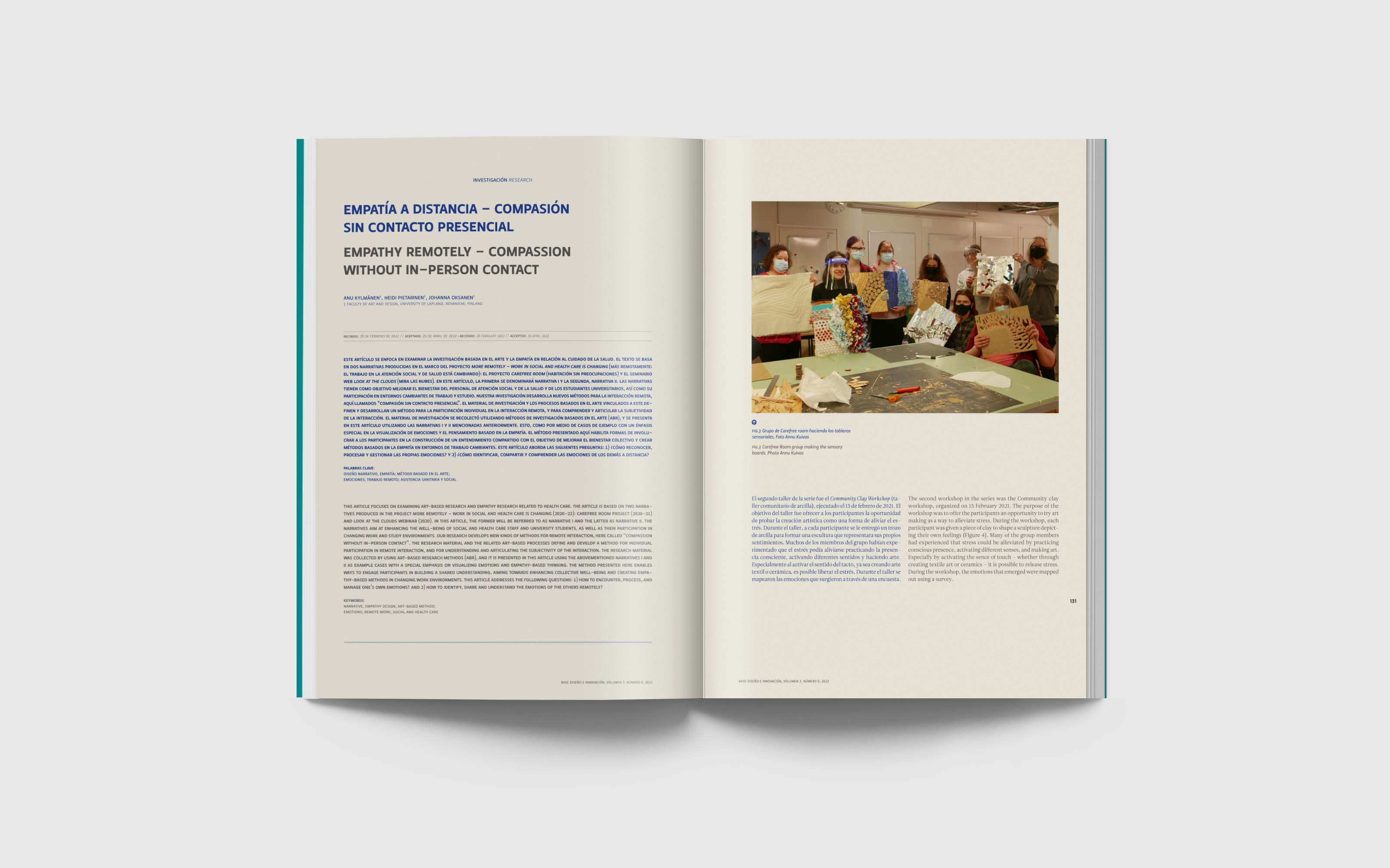Empathy Remotely Compassion without in-person contact
Main Article Content
Abstract
This article focuses on examining art-based research and empathy research related to health care. The article is based on two narratives produced in the project More Remotely – Work in Social and Health Care is Changing (2020–22): Carefree room project (2020–21) and Look at the Clouds webinar (2020). In this article, the former will be referred to as Narrative I and the latter as Narrative II. The narratives aim at enhancing the well-being of social and health care staff and university students, as well as their participation in changing work and study environments. Our research develops new kinds of methods for remote interaction, here called “compassion without in-person contact”. The research material and the related art-based processes define and develop a method for individual participation in remote interaction, and for understanding and articulating the subjectivity of the interaction. The research material was collected by using art-based research methods (ABR), and it is presented in this article using the abovementioned Narratives I and II as example cases with a special emphasis on visualizing emotions and empathy-based thinking. The method presented here enables ways to engage participants in building a shared understanding, aiming towards enhancing collective well-being and creating empathy-based methods in changing work environments. This article addresses the following questions: 1) How to encounter, process, and manage one’s own emotions? and 2) How to identify, share and understand the emotions of the others remotely?
Article Details
References
Barone, E. & Eisner, E.W. (2011.) Arts Based Research. Sage.
Clarke, R. I. (2020).?Design Thinking. ALA Neal-Schuman.
Escobar, A. (2011). Sustainability: Design for the pluriverse. Development, 54(2), 137–140.
Fokus (2022) Focus on Management of Wellbeing at Work. https://www.fokukseen.fi/in-english/.
Foucault, M. (1994).?The archaeology of knowledge. Routledge.
Fredrickson, B.L., Tugade, M.M., Waugh, C.E. & Larkin, G.R. (2003). What Good Are Positive Emotions in Crises? A Prospective Study of Resilience and Emotions Following the Terrorist Attacks on the United States on September 11th, 2001. Journal of Personality and Social Psychology. 2003 March; 84(2): 365–376. https://doi.org/10.1037/0022-3514.84.2.365
More Remotely - Work in Social and Health Care is Changing (Etänä enemmän). (2022). https://www.etanaenemman.fi/in-english/.
Kosonen, K. (2018). Finding one’s own way in design. Reflections on narrative professional identity. Doctoral dissertation. Aalto university. Finding One's Own Way in Design - Reflections on Narrative Professional Identity (aalto.fi)
Leavy, P. (2015).?Method meets art: Arts-based research practice?(second edition). Guilford Press
Nummenmaa, L. (2010). Tunteiden psykologia. Tammi.
Pietarinen, H. Qureshi, A. & Sarantou, M. (forthcoming 2022). Flag: A Shared Horizon. Artistic Cartographies and Design Explorations towards the Pluriverse. University of Lapland.
Shockley, K. M., Gabriel, A. S., Robertson, D., Rosen, C. C., Chawla, N., Ganster, M. L., & Ezerins, M. E. (2021). The fatiguing effects of camera use in virtual meetings: A within-person field experiment. Journal of Applied Psychology, 106(8), 1137–1155. https://doi.org/10.1037/apl0000948.
Tsirogianni, S., & Gaskell, G. (2011). The role of plurality and context in social values. Journal for the Theory of Social Behaviour, 41(4), 441–465. https://doi.org/10.1111/j.1468-5914.2011.00470.x


